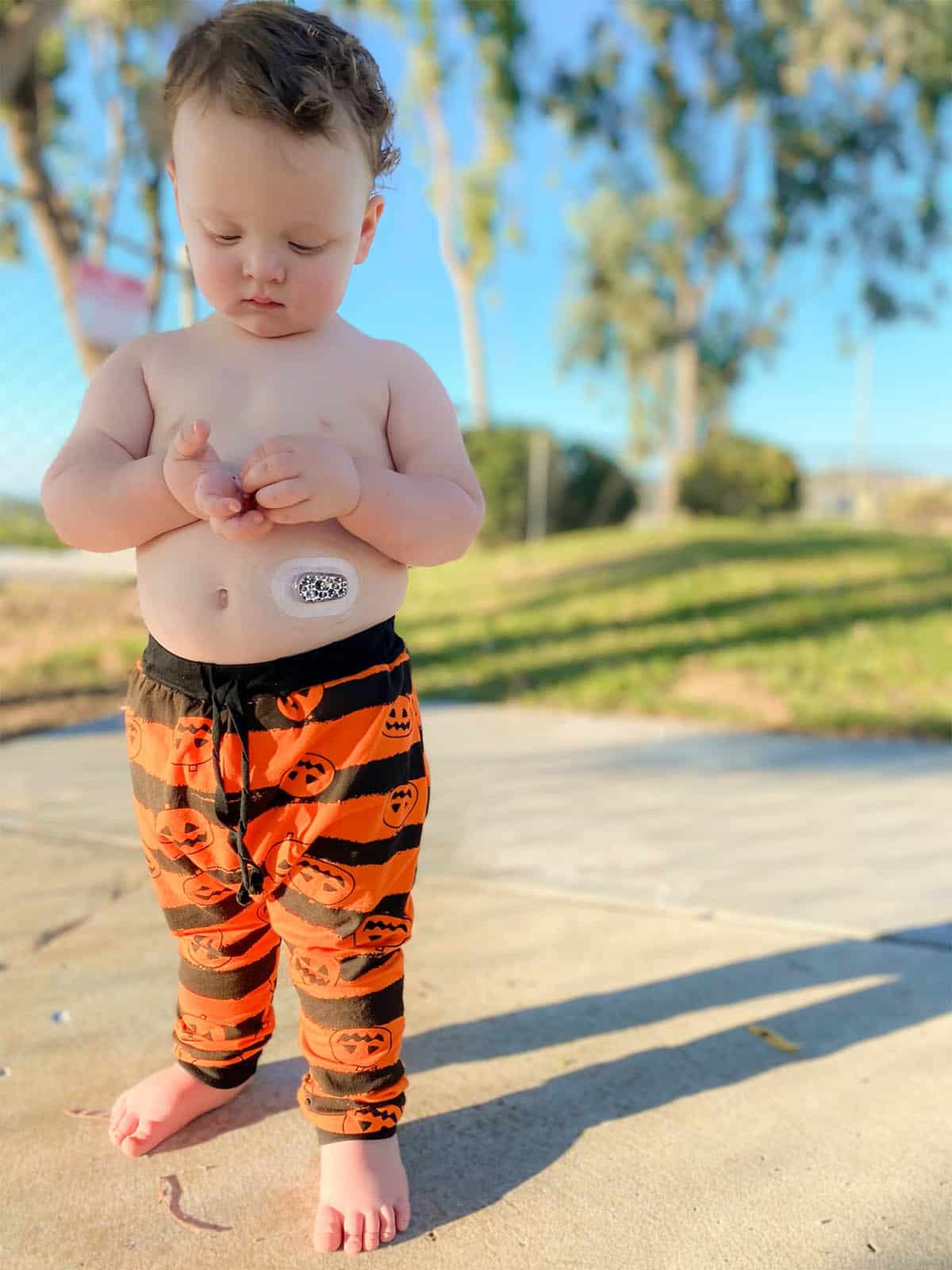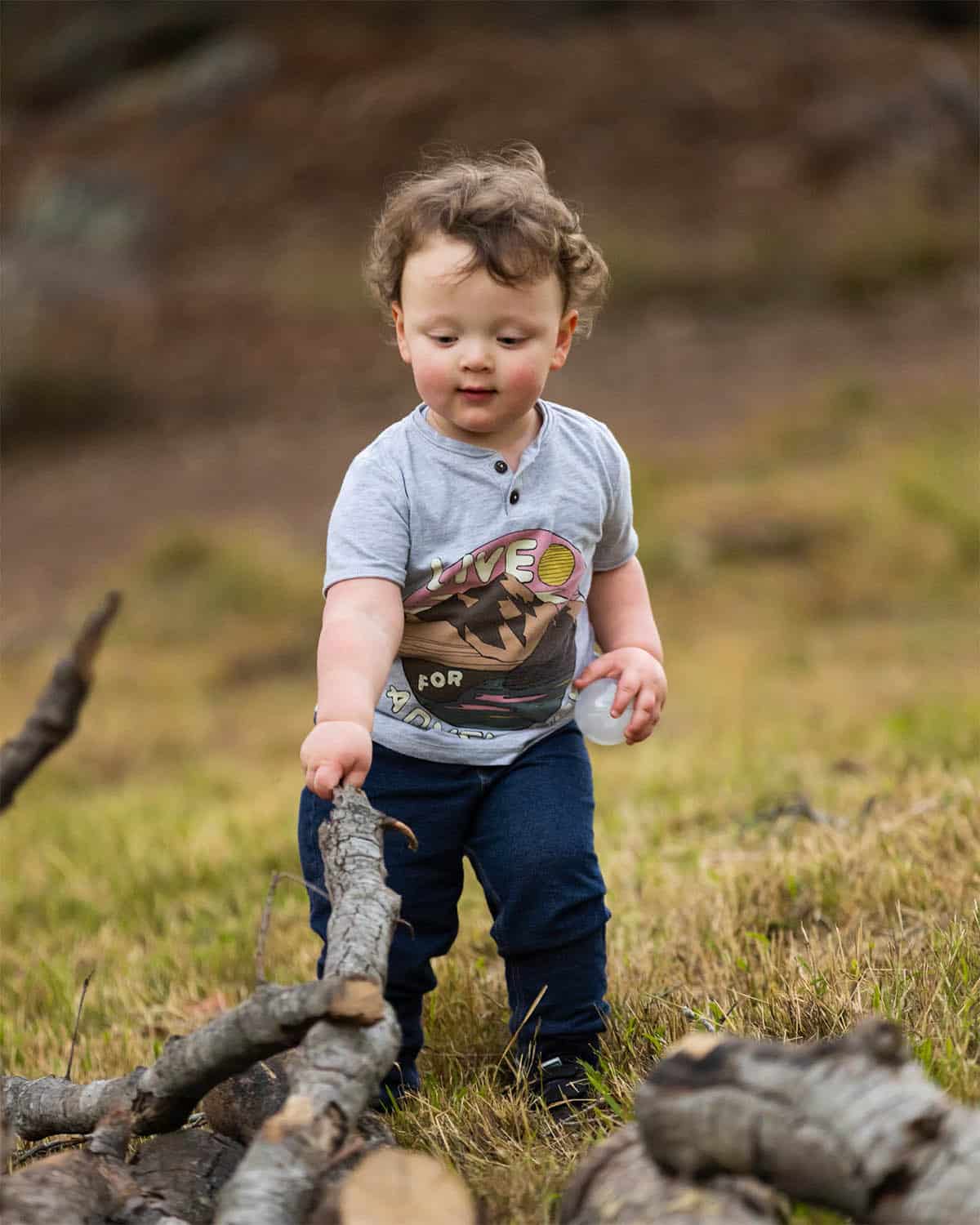As someone living with insulin-dependent diabetes, I know how crucial it is that I can recognize the signs of low blood sugar.
I can only imagine how challenging it must be to manage someone else’s diabetes, let alone a toddler who can’t communicate how he feels just yet.
In this article, Amanda shares the story of her son Lukas, a toddler living with type 1 diabetes, and how they handle low blood sugar and prepare for the risk of severe low blood sugar.
This post is sponsored by Xeris Pharmaceuticals, Inc. the manufacturer of Gvoke HypoPen® (glucagon injection).

What is low blood sugar?
Living with insulin-dependent diabetes means managing blood sugar 24/7. It’s a delicate balance of blood sugar readings, insulin, food, and a long list of other things that can impact blood sugar management.
Give the complex nature of diabetes, anyone living with insulin-dependent diabetes will occasionally experience Hypoglycemia, also known as low blood sugar. While occasional low blood sugar can be expected, there’s also the scare of very low or severe low blood sugar. It’s very individual how low your blood sugar has to be for you to feel low.
When a young child lives with diabetes, the challenge can be to know when blood sugars drop low, especially if they can’t communicate. Many caregivers will rely on continuous glucose monitor (CGM) or very frequent blood sugar measurements using a glucose meter.
Most low blood sugar can be treated with carbohydrates but there are situations where food or drinks aren’t working and no more carbohydrates can be safely consumed.
In the case of very low blood sugar, or situations where no more carbohydrates can be consumed, glucagon should be used and an option is to use Gvoke HypoPen.
What sets Gvoke HypoPen apart is that it is a premixed and prefilled autoinjector with no visible needle and can be administered with just two steps. Gvoke HypoPen is ready-to-use to treat very low blood sugar in adults and kids with diabetes ages 2 and above.
The fact that you can use Gvoke HypoPen on kids ages 2 and above is very relevant for families like Lukas’s.
Managing a toddler’s type 1 diabetes
I’ve been following Lukas and his family on social media for a while, and am thrilled to share his family’s story with you in this article.
Lukas was diagnosed with type 1 diabetes when he was 13 months old. He is now two and a half and has been living with type 1 diabetes for 17 months.
The family didn’t expect a diabetes diagnosis when they brought him to the doctor, and neither did the medical team. After 5 hours, the medical team realized that Lukas was in DKA and he was diagnosed with diabetes.
It was a huge change for the young family and after 5 days in the hospital, they were sent home to a new life with a toddler living with type 1 diabetes.
In February of 2021, Lukas was also diagnosed with autism. That means that his speech is delayed and it will be a bit longer before he can communicate how his blood sugar makes him feel.
Recognizing when Lukas has a low blood sugar
A lot of work goes into managing Lukas’s blood sugar and avoiding low blood sugar.
When Lukas was diagnosed, the family relied completely on measuring Lukas’s blood sugar with a glucose meter. That meant measuring his blood sugar every few hours, including overnight.
He would become a bit more sluggish or even a little clammy when his blood sugar dropped, but there was no real way to tell unless his blood sugar was measured manually.
Now he has a CGM and the low alert is set at 65 mg/dL (3.6 mmol/L). However, Amanda, Lukas’s mom, says that they will usually have him eat some carbohydrates before it gets that low.
They keep an eye on his blood sugar by using the CGM share functionality. That allows them to see his blood sugar readings on a tablet mounted to the wall in the playroom and on their smartwatches.

The emotional toll of low blood sugar
A low blood sugar episode can be traumatic for the whole family. Amanda says that she knows how to stay calm now, but especially in the beginning, it would trigger a lot of stress and panic.
She recalls their first family trip after his diagnosis. They were snowed in at a cabin in Big Bear and Lukas blood sugar reading was 44 mg/dl. They had everything they needed to treat low blood sugar but still, the panic crept in. He was only 1 year old so low treatments were limited and Amanda ran the whole “what if” scenario in her head.
Since his diagnosis, there have been situations where he refuses to drink juice or eat, and those always raise the stress level for the whole family. It can be hard to reason with a toddler, especially when it’s in the middle of the night and he’d rather be sleeping than eating frosting or smarties. But fortunately, they have always managed.
Preparing for a very low blood sugar
Lukas’s blood sugar has never been so low that he lost consciousness. The lowest Amanda has measured is 29 mg/dl (1.6 mmo/L) and Lukas seemed unfazed, but Amanda says she felt panicky. I asked if she considered using a glucagon kit when his blood sugar was that low, or in those situations where he’s not willing to consume carbohydrates.
Although they have a glucagon kit in his diaper bag, in the car, and outside their bedroom, the idea of the ordeal of using the traditional glucagon kit has been overwhelming. Amanda told me that the concept of the traditional glucagon kits, where you have to calmly mix the glucagon before use and pull up the accurate dose for a child is terrifying.
Nobody had discussed other glucagon options with her, so it’s not surprising that she was very excited about the option of using Gvoke HypoPen once I explained that it’s premixed, a 2-step administration process, and pre-dosed for children.
A new life with diabetes and words of wisdom
Lukas’s diabetes diagnosis turned the whole family’s life upside down. Not only has it been a heavy economic burden but because he’s so young, the majority of their time is dedicated to managing his diabetes. That means a lot of education, hands-on-deck 24/7, lack of sleep, and anxiety. But also a lot of love and engagement with other parents of children living with diabetes.
As a family, they have had to make decisions on who provides for the family and who stays home and manages Lukas’s diabetes. They make it work and have even managed to start an Etsy business in the process!
Amanda calls the comradery and peer support she has found in the diabetes community a lifesaver. And when I asked for words of wisdom, she highly recommends that other parents of children living with diabetes become part of the diabetes community.
It gives you someone to lean on, shoulders to cry on if needed, and a 24/7 support system. Like me, Amanda doesn’t believe that life with diabetes should be something you have to go through alone.

Who is Gvoke HypoPen for and how to get it
Gvoke HypoPen can be used to treat a severe low, if you or your child experience one or more of the following:
- have repeatedly tried correcting with food or drink and it isn’t working
- are unable to swallow safely
- feel like you/they might pass out
- experience loss of consciousness or a seizure
Gvoke® is the only premixed glucagon approved for children 2 years and up and you don’t have to worry about measuring out the glucagon dose as Gvoke comes in 2 pre-measured doses – one dose for adolescents and adults (1.0 mg) and one for kids age 2 and above (0.5 mg).
Kids younger than 12 who weigh at least 100 pounds may be prescribed the 1.0 mg dose.
Gvoke is a prescription drug so you need to reach out to your doctor and request a prescription. If you have commercial insurance, you can also go directly through GvokeGlucagon.com and request a prescription to be delivered directly at your door.
For a limited time, Xeris is offering a $0 copay for commercially eligible patients to help ensure as many people as possible can access Gvoke HypoPen.
Important Safety Information
Gvoke is a prescription medicine used to treat very low blood sugar (severe hypoglycemia) in adults and kids with diabetes ages 2 year and above. It is not known if Gvoke is safe and effective in children under 2 years of age.
Do not use Gvoke if you have a tumor in the gland on top of your kidneys (adrenal gland), called a pheochromocytoma; you have a tumor in your pancreas, called either insulinoma or glucagonoma; you are allergic to glucagon or any other inactive ingredient in Gvoke.
Gvoke may cause serious side effects, including high blood pressure: Gvoke can cause high blood pressure in certain people with tumors in their adrenal glands. Low blood sugar: Gvoke can cause low blood sugar in certain people with tumors in their pancreas. Serious skin rash: Gvoke can cause a serious skin rash in certain people with a tumor in their pancreas called glucagonoma. Serious allergic reaction: Call your doctor or get medical help right away if you have a serious allergic reaction including rash, difficulty breathing, low blood pressure.
See Important Safety Information: http://bit.ly/2lJdBjY
See Full Prescribing Information: http://bit.ly/2lRtk07



